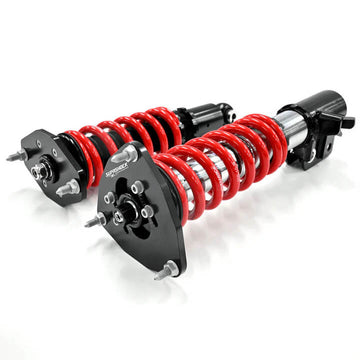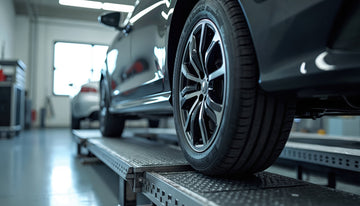In the context of vehicle suspension, a dust cover, also known as a dust boot or dust seal, is a protective component that covers various suspension parts to shield them from dirt, dust, moisture, and other contaminants. It is typically made of rubber or a similar flexible material.
What is the purpose of a dust cover?
The primary purpose of a dust cover is to prevent debris from sticking to the damper shaft and degrading the shaft surface and seals. By keeping the shaft clean and free from contaminants, the dust cover helps maintain their smooth operation and prolongs their lifespan.
Dust covers are commonly found on components that have exposed joints or moving parts. They are typically installed over the joint or connection point and secured in place with clamps or other fastening mechanisms. The cover forms a protective barrier that seals out dirt and debris while allowing the component to move freely.
In addition to preventing contamination, dust covers also contribute to overall suspension performance and safety. By reducing the buildup of dirt and debris, they help preserve the lubrication and functionality of the suspension components, ensuring smooth operation and minimising wear and tear. They also help prevent corrosion, which can compromise the integrity and strength of the suspension parts.
Installation Process of Dust Covers for Suspension Systems
The installation process of dust covers for suspension systems might vary based on the specific make and model of the vehicle, and the type of suspension component involved.
With the following steps, a qualified expert can ensure the proper installation of dust covers for suspension systems, enhancing the longevity and performance of the suspension components while minimising the risk of damage or premature wear:
Vehicle preparation
They would begin by ensuring that the vehicle is properly prepared for the installation of dust covers for the suspension systems. This may involve lifting the vehicle, securing it on jack stands, and removing any necessary components or parts that obstruct access to the suspension system.
Component removal
Next, they would carefully remove the relevant suspension components, in order to remove the coilover unit from vehicle. This step may require the use of specialised tools and techniques to safely detach the components without causing damage.
Installation
Once the coilover is removed, they would position the dust cover over the damper shaft, ensuring a proper fit and alignment. Depending on the design of the dust covers, they may need to be secured using clips, fasteners, or other appropriate methods.
Component reinstallation
After the dust covers are successfully installed, they would then reattach and reinstall the previously removed components, including the coilovers and related suspension components. This step involves following the manufacturer's specifications and guidelines to ensure proper installation and alignment of the suspension system.
Final check
Once all the components are reinstalled, they will conduct a thorough final check. This involves inspecting the dust covers and suspension system for any signs of misalignment, loose connections, or other potential issues. They may also perform tests or adjustments to ensure that the suspension system functions properly and that the dust covers effectively protect the components from dust, debris, and other contaminants.
How do I ensure the effectiveness of my dust cover?
To ensure the effectiveness of your suspension's dust covers, here are some key steps you can take:
Regular Inspection
Perform visual inspections of the dust covers at regular intervals. Look for any signs of damage, such as tears, cracks, or holes. Pay attention to the condition of the rubber or flexible material, ensuring it is intact and properly attached.
Cleanliness
Keep the suspension components and dust covers, such as suspension shocks and covers struts, clean. Regularly wash your vehicle, paying special attention to the areas around the suspension joints and connections. Remove any accumulated dirt, mud, or debris that could potentially compromise the effectiveness of the dust covers.
Avoid Harsh Environments
Limit exposure to harsh conditions whenever possible. Off-road driving, excessively dusty or muddy environments, and rough road surfaces can put additional stress on the dust covers. Minimise exposure to these conditions to help maintain their effectiveness.
Maintain Proper Lubrication
Some suspension components, such as ball joints and tie rod ends, require lubrication. Ensure that these components are properly lubricated according to the manufacturer's recommendations. Adequate lubrication helps reduce friction and wear, contributing to the longevity of the dust covers.
Prompt Repairs or Replacements
If you notice any damage or signs of wear on the dust covers, address them promptly. Repair or replace damaged covers as soon as possible to maintain the protection and functionality of the suspension components. Contact a professional technician or consult your vehicle's manufacturer for guidance on proper replacements.
Professional Inspection
Consider having your suspension system inspected by a qualified technician during routine maintenance or if you suspect any issues with the dust covers. A professional can assess the condition of the dust covers and recommend any necessary repairs or replacements.
By following these steps, you can help ensure the effectiveness of your dust covers, keeping critical components protected from contaminants and maintaining optimal performance and longevity.





